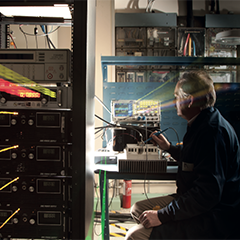The search for reliability in the renewable energy sector is an ongoing one. Increasing reliability in wind turbine parts reduces downtime and costs while allowing for a constant flow of power to the grid. Also, by finding new ways to improve processes and reduce the time and effort taken to identify and replace faulty parts, companies can drastically improve efficiency.
For engineers in the Energy & Motion Technologies division at Galway-based Test Laboratory Anecto, striking a balance between innovation and quality control is essential to increasing reliability. They insist that innovation and research comes in tandem with quality control; citing as examples, their in-house refurbishment processes as well as recent work with the UK’s Durham University that has breathed new light on the stresses that changing wind patterns cause to a power converter’s IGBT and led to their conclusion that a ‘holistic approach to wind turbine power converter reliability’ is more advisable in future.
Anecto test laboratory started as an electronics test house in 1994 but developed into a major provider of product and packaging testing for the medical devices and many other sectors. By leveraging the engineering talent they had on site and innovating, the company pushed into the renewable energy market in 2010 and have since developed into a major third party test, repair and refurbishment provider for wind turbine power electronics components.
Our adherence to reliability and willingness to innovate is one of the reasons we were able to grow quickly to reach our current stage. It also helped in building the partnership between Durham and ourselves with the research, centred on measuring IGBT and diode junction temperatures using infra-red sensors, which has revealed some very useful results.
In order to test the units as close as possible to the way they are going to be used in the wind turbine, we collaborated with Durham. Basically they came up with wind profiles that stress the IGBT more than, for example, a constant load. In order to stress the IGBT a bit further they thought it would be interesting to emulate wind conditions where the power is not constant and the wind goes up-and-down, up-and-down. That translates into different power delivery to the grid.



























